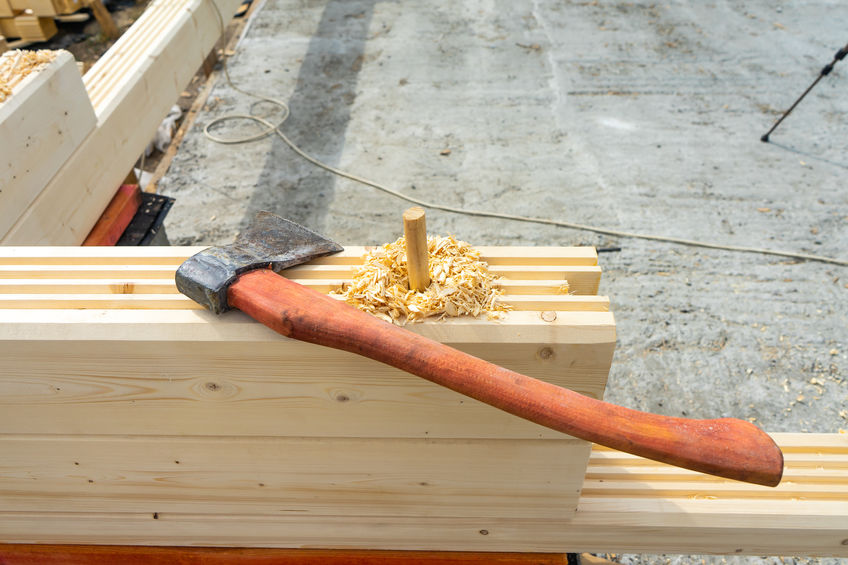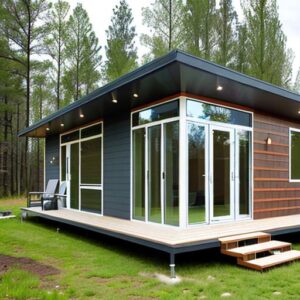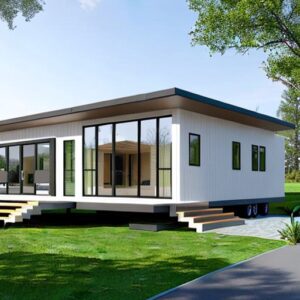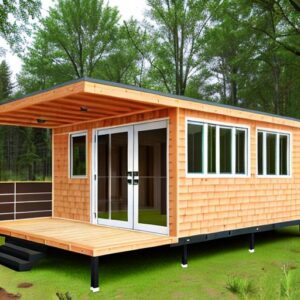Besides the durability and sturdiness of the material, other deciding factors include the cost, availability, construction skills, and experience. Different shed materials have their benefits and downsides and the material that works great for you will not be the same for everyone. This article looks at the benefits and downsides of the best shed materials out there to help you determine what suits your home best.
Metal
Metal sheds can be made up of steel or aluminum. They are highly durable and can last for many years without breaking down. Good quality metal can survive harsh weather conditions, as it is resistant to rot, warping, or termite problems. They require less maintenance because they are easy to clean and do not need to be repainted every few years like wood. Besides their durability and sturdiness, metal sheds are generally more affordable than wood and give you more shed for your money. The extra budget funds could be used to add more features to the shed such as extra doors, windows, shelves, and many more.
However, one of the biggest disadvantages of metal sheds is that they are prone to rust and corrosion. Rust occurs in areas where adjustments were made when adding new shelves, windows, and other sections. It exposes the inner surface to oxidization leading to rust and corrosion that eats away the metal over time. Metal sheds can also get very hot inside during summer when exposed to direct sunlight. You may consider insulating the shed, adding air conditioning, or providing good ventilation to keep your valuables safe during summer.
Plastic
The type of plastic used to build sheds is different from a drinking bottle or a shopping bag. It is made out of a high density, UV-resistant plastic that is purposely designed for outdoor use. Plastic sheds are becoming more popular because they are durable and require very little maintenance compared to other shed materials. Unlike metal, plastic sheds are not prone to rust and do not need to be sealed to keep the weather at bay. They can stand a test of time and still look good because water does not affect plastic the same way it does to wood and metal. The type of plastic used on these sheds is very thick, which helps protect your valuables from temperature changes and different weather conditions.
They come in different shapes and patterns that mimic wood, natural stone, and even slate roofs. It is easy to assemble a plastic shed because they have a few pieces to put together. Some types of plastic sheds require a screw or fastener to assemble while others just need to be snapped together. However, the quality of plastic shed you choose plays a significant role in security and its ability to protect your valuables against natural elements. Extreme heat can buckle the panels leaving wide enough spaces for rain and pests to enter.
Wood
A woodshed can last for a very long time if it is built from suitable good quality wood and is properly maintained. It is a very good insulator than most of its rival materials as it keeps the shed cool during summer and warm during winter. Wood provides numerous customization options than metal or wood as you can add unique features like canopies, cupolas, large windowsills to raise seeds, and outside storage boxes. It is cheaper to construct a wooden shed if wood products are widely available in your area. Furthermore, wood can easily be replaced if a certain section of the shed gets damaged over time.
The most important factor to consider when choosing a woodshed is the climatic condition in your area. If you live in an area with constant rainfall, your woodshed will require frequent maintenance to prevent it from mold, rot, and termite problems. Besides regular maintenance, wood sheds need to be raised from the ground to protect them from water and pests. The poles that are dug into the ground should be treated to keep pests and termites at bay.
The ideal material for your shed will depend on the cost, availability, and other features that determine its durability and longevity. Wood might offer the best choices in terms of customization and insulation but may require a high level of maintenance to keep it in perfect condition. Metal sheds are very strong and durable but lack enough customization options and are prone to rust. Plastic sheds may outshine wood and metal in other aspects but are not resistant to extreme heat. The choice of material for a shed may vary depending on individual preferences and the material that works best for your situation.




